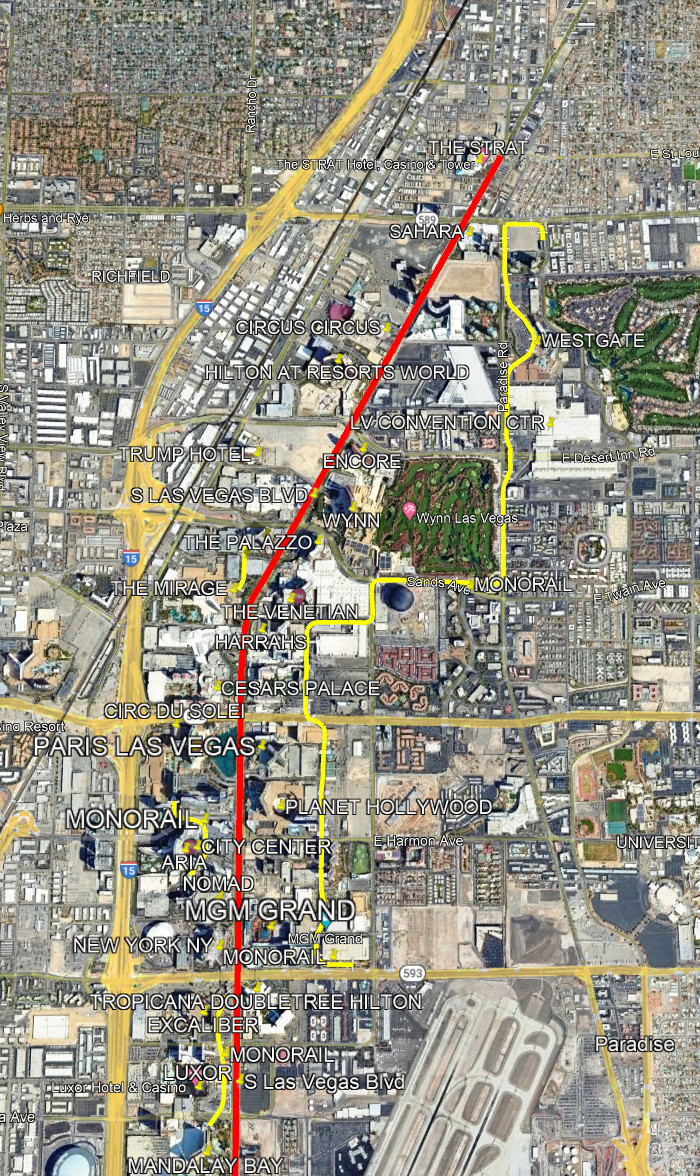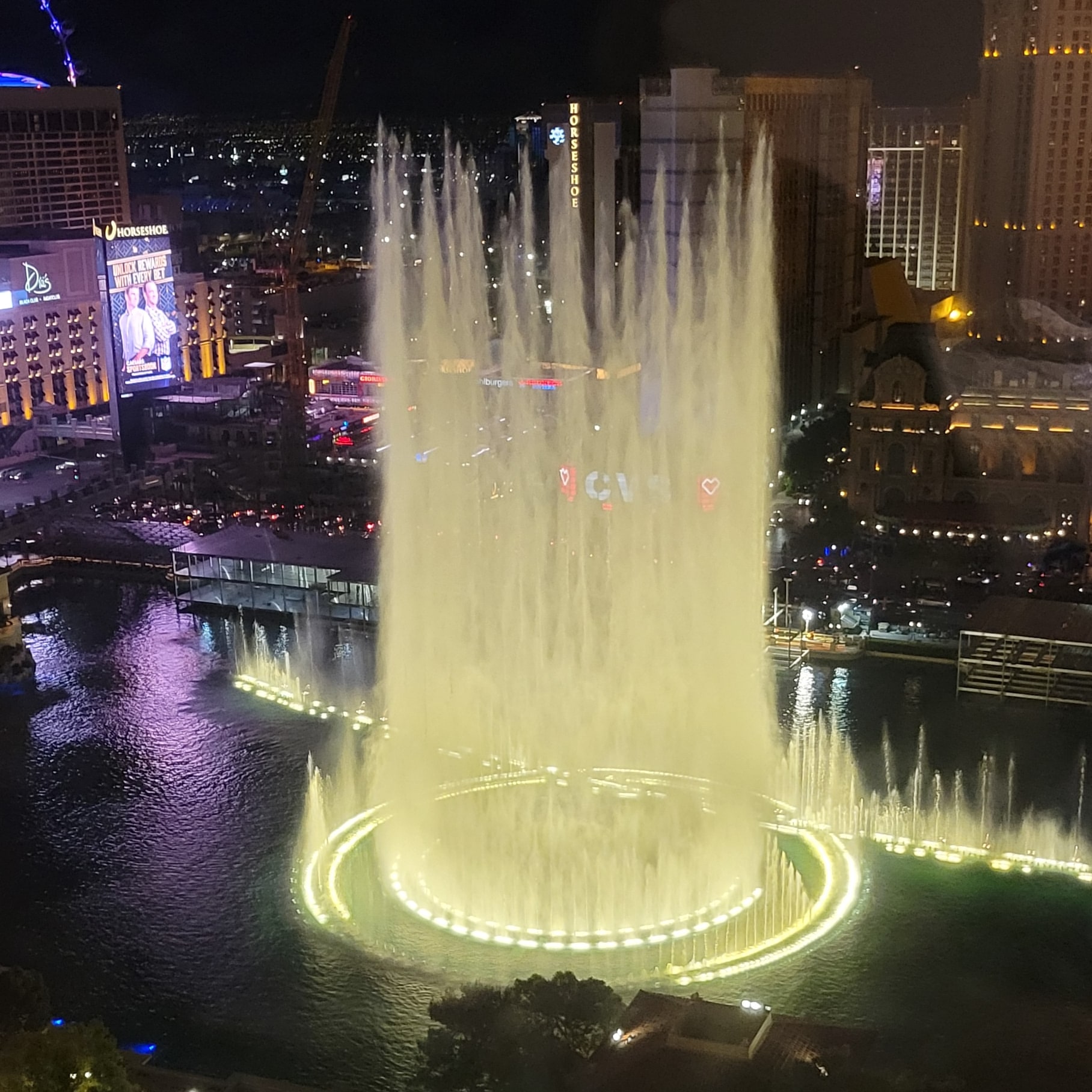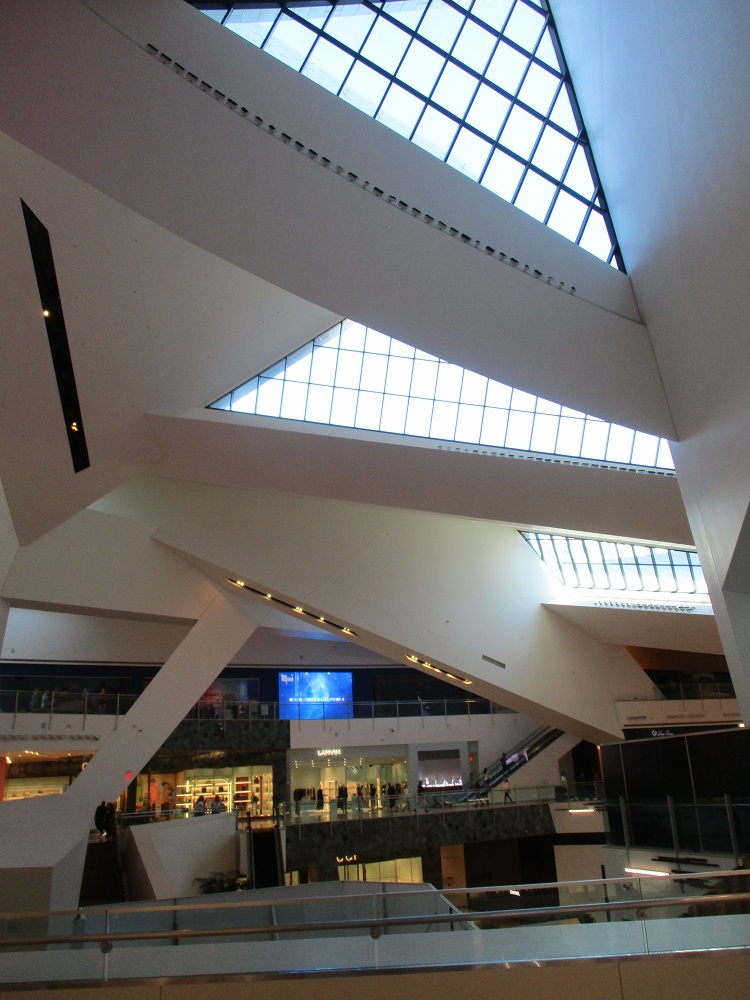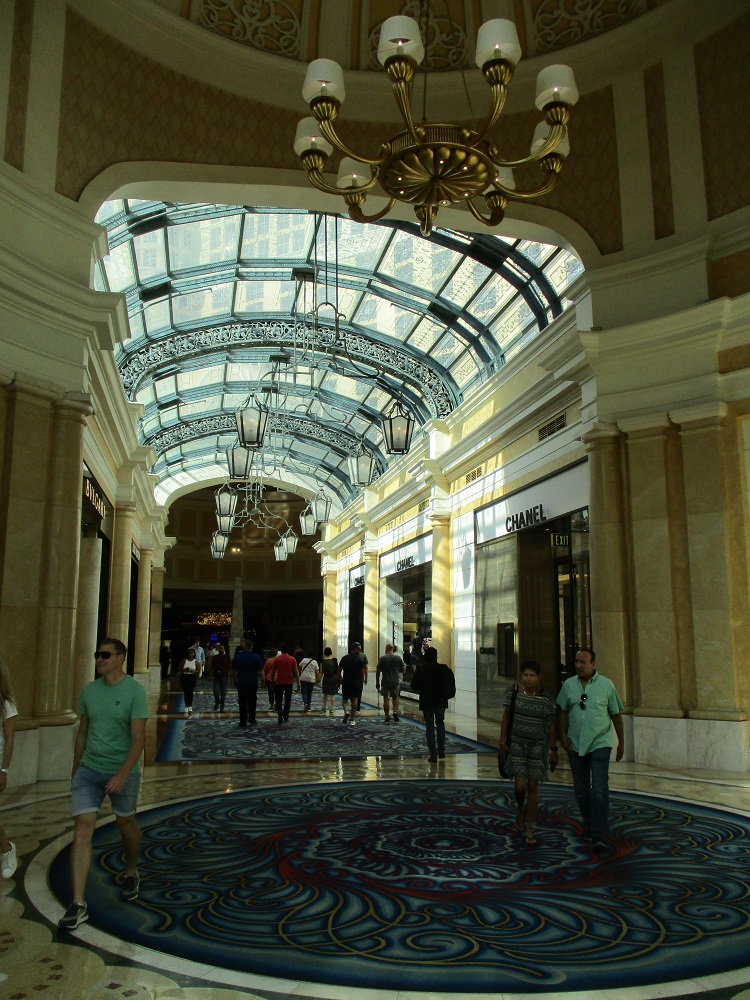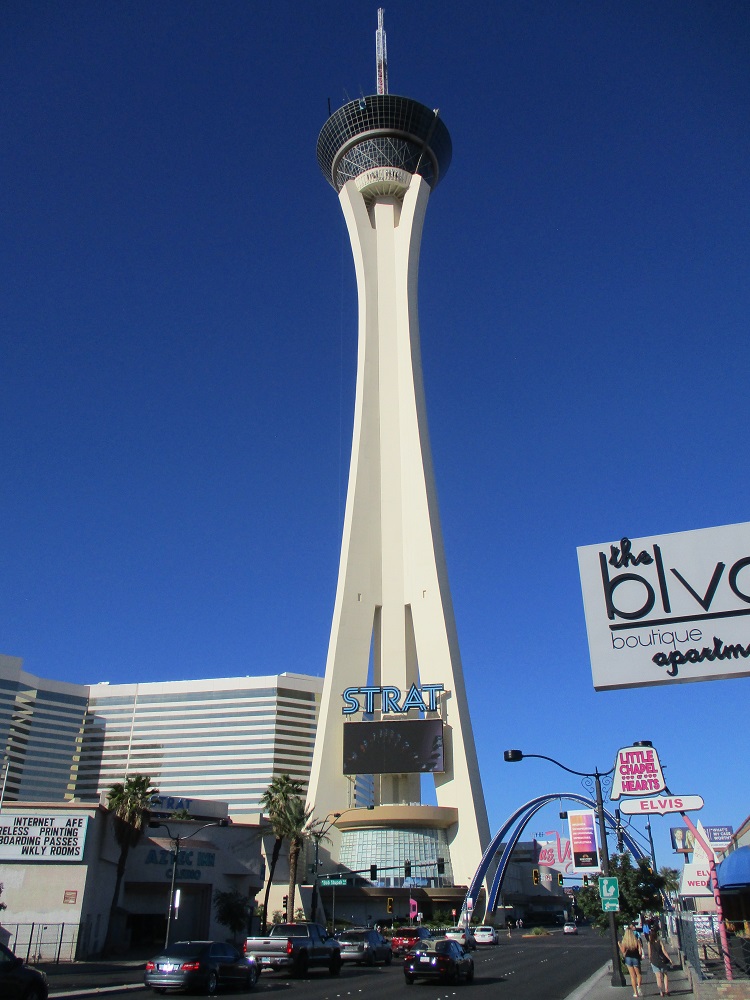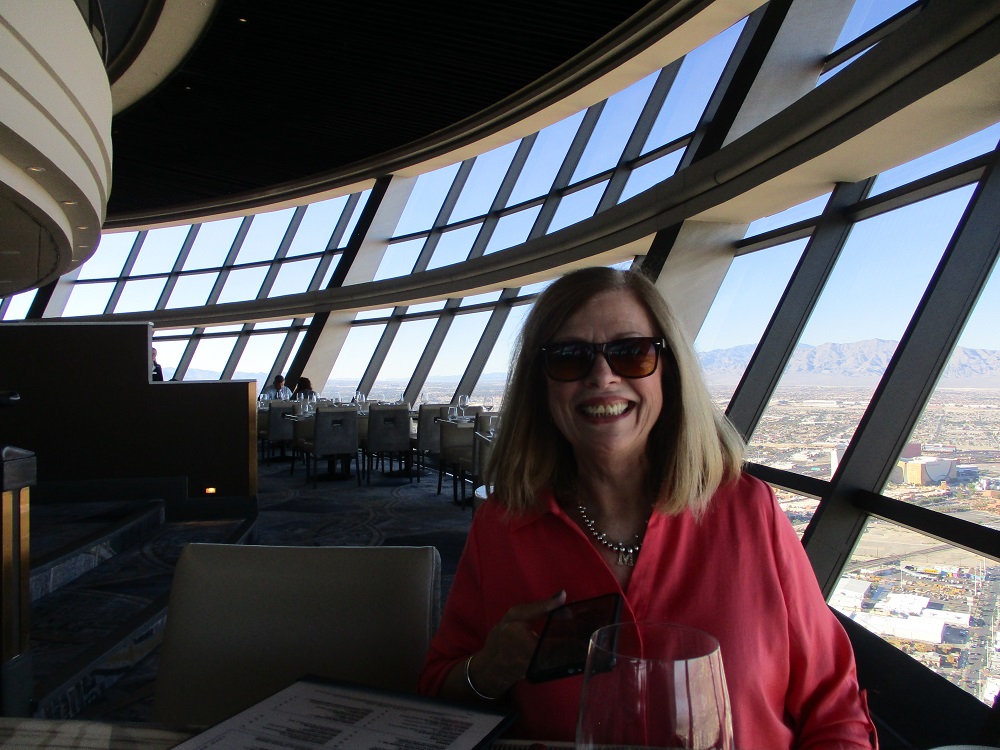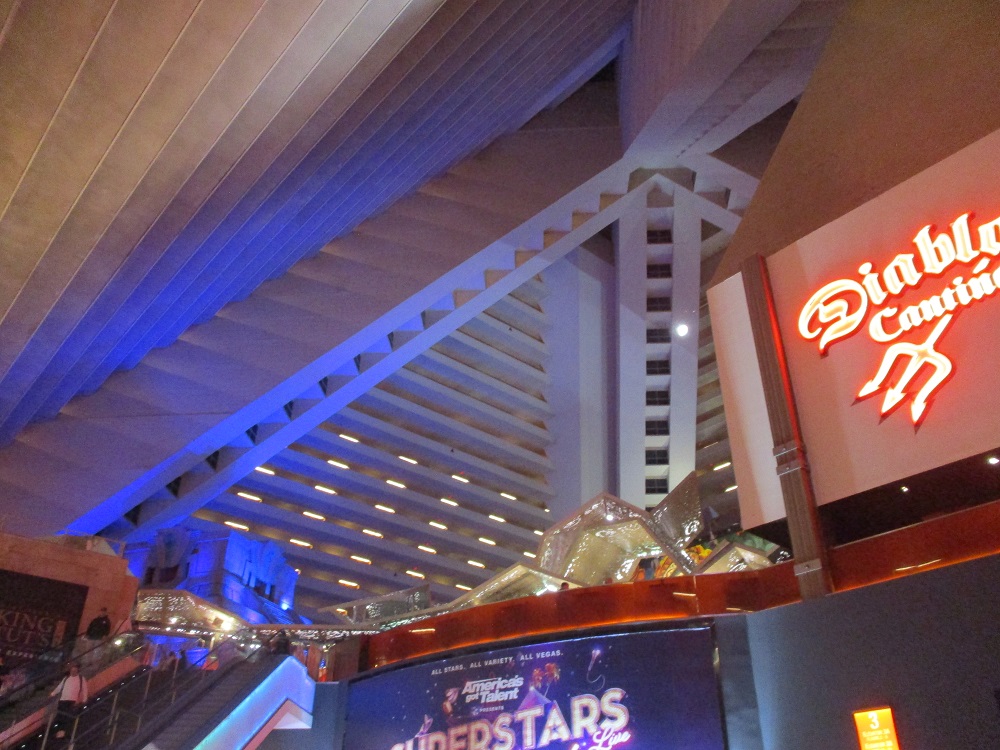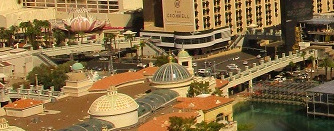Las Vegas Architectural Research is about an Architect and his Realtor wife traveling to and researching Las Vegas and its special architecture, city structure, organization, shows and other aspects in early October 2023. There is a related online article about Grand Canyon research here:
https://www.homearchitects.com/grand-canyon-research
All photos in this online article are original photographs taken by HOME ARCHITECTS, © Copyright 2023, Home Architect, PLLC, All Rights Reserved Worldwide.
Las Vegas is the 25th most populated urban area in the USA and the largest in the state of Nevada (Clark County). The Las Vegas metro area is the largest in the greater Mojave Desert and the 2nd largest in the SW USA.
HISTORY
Contrary to popular opinion, Las Vegas was not founded by gangsters. It was originally founded in 1905 by several land developers who wanted to create a railroad stop in the Mojave Desert between Los Angeles and Salt Lake City. Vegas is a Spanish word = “meadows”. It was planned on being a lush green oasis. It began when a railroad company auctioned 110 acres of land between 5th Street (Las Vegas Boulevard) and Main Street, and Stewart Avenue and Garces Avenue. Availability of water made Las Vegas the perfect refueling point in the arid desert. J.T. McWilliams drafted his original townsite on the land.
In 1911, Las Vegas was incorporated. In 1922, Westside School was built on D Street and West Washington Avenue. In 1931, divorce laws were passed in the Las Vegas area that allowed for fast marriage dissolution for residents, and so, dude ranches there hosted people posing as residents from all over the USA, in order to obtain swift divorces.
The first gambling/gaming licenses were granted to Mayme Stocker at the Northern Club. Also, in this year, the construction of the Hoover Dam brought thousands of workers, which created a population boom in the area.
In 1941, Nellis Air Force Base was built (originally known as Las Vegas Army Air Field). The El Rancho Vegas hotel-casino was the first themed resort on the Las Vegas Strip.
In 1942, the Last Frontier casino was built.
In 1945, Bugsy Siegel took over construction of a hotel-casino on the then edge of Las Vegas (the Flamingo), later to become the center of the Las Vegas Strip. This is the era in which gangster/mob influence became prevalent in the city.
This is also the era in which big name movie stars like Dean Martin, Jerry Lewis, Sammy Davis Jr., Frank Sinatra, Danny Thomas and others performed there, establishing Las Vegas as an entertainment mecca, a practice carried out through today, but in all of the hotels.
In 1948 came the construction of The Thunderbird, and other hotels/casinos. In the Fremont Street area, the El Cortez hotel-casino opened.
In 1950, hearings were held locally, dealing with the mob gangster involvement in the city.
In 1966, Fremont Street and the Las Vegas Strip saw multiple renovations and multi-story additions. Howard Hughes started buying various business and hotels, paving the way for more businesslike corporate ownership of the facilities later, as the city continued developing.
1985-1995: 7% population growth per year, including for conventional housing outside of the main city. 1995: the Fremont Street Experience opened, with its $70 million electronic roof canopy, which also turned the street there into strictly pedestrian.
1998: the Bellagio Hotel-Casino opened, at a cost of $1.6 billion, at the time, the world’s most expensive resort, complete with huge outdoor fountain and main attraction. This marked a major turning point in establishing higher quality buildings along the Las Vegas Strip. The Architect (author of this online article) and his wife stayed there in October 2023. It is a spectacular hotel.
2007: 3 block area called the Fremont East Entertainment District opened, to help revitalize that portion of downtown.
2008-2023: spectacular new highrise hotel-casinos built up and down the Las Vegas Strip.
NOTES ABOUT THE PLANNING GEOMETRY OF THE LAS VEGAS STRIP
Unfortunately, the linear and rectangular nature of the original city planning of the Las Vegas Strip continues to haunt it through today. See the red line in the image below.
What is meant by this?
There’s NOTHING good about a linear street when it comes to establishing a sense of place in which other significant activities are to take place.
A linear street means movement, straight on through. Not stopping. And a super highway down the middle of Las Vegas makes it almost impossible for pedestrians to walk across it (on ground level).
Also, the linear Strip places some of the buildings and features at the far ends, way away from each other. And this means walking the Las Vegas Strip takes about 3 to 4 hours, possibly longer if you walk slowly. Because the “Strip” is actually “Las Vegas Boulevard” and it is essentially a linear street with 4 to 6 lanes of traffic down the middle. And it not easy to cross from one side to the other (the east side and the west side).
The red line above is the Las Vegas Strip (Las Vegas Blvd), courtesy of Google Earth.
In the opinion of this HOME ARCHITECTS ® Architect, the extent of “The Strip” is really from the Mandalay Bay Hotel-Casino at the south, and The Strat far to the north. Because anything beyond in either direction gets into sketchy areas where crime levels increase, according to Uber drivers the Architect and his wife used while there. And you really don’t want to be on foot getting beyond those limits. However, along The Strip, the police appeared to do an excellent job of maintaining law and order. Thank you for your service, local police.
URBAN PLANNING-DESIGN, PLANNING RESEARCH INSIGHT: CIRCLE CORE, WHAT COULD HAVE BEEN
(which would have been better than what is there now)
The Las Vegas Strip attempts to be pedestrian oriented, but this desired means of foot travel is hampered by the sheer length of it, and the difficulty in trying to get from one side of the very wide and dangerous street to the other on foot. And the Clark County RTC public buses are not fun to ride. Uber becomes the only civilized means of transportation for people on vacation there, but at about $20 to $30/ride, that adds up quickly.
So, what would have been a better city plan for this vacation/resort mecca?
A circle.
Yes. Can’t do much about this now, what with the trillion+$ worth of development there. And there’s no way the original town fathers could have foreseen what Las Vegas would become.
Urban planning/architectural research point of view?
You’d make this circle the heart of Las Vegas. It would be one mile in diameter. And it would be heavily landscaped: an oasis, such as the original “Vega” (or meadow) suggested. Note “las” = “the.” Therefore, Las Vegas = The Meadows. There would also be various small scaled facilities in this core area restaurants, employee housing and other shops and medical emergency care areas and gathering spots.
Any reasonably ambulatory human should be able to walk the mile across the center in about 20 minutes, if they walk about 3 MPH, which is a very swift navigation time. And there could be moving walkways, automated trams and similar people-mover systems moving pedestrians across the middle and around the core edge, to get from place to place. No surface cars or trucks in this theoretical concept core..
The perimeter of this circle would be 3-1/7 miles (16,594.28 feet). If the circle core city plan would have divided up the zone beyond the circle core into 300 foot long pie shaped parcels for each hotel-casino (smaller for other independent shops and restaurants), that would have allowed for around 55 massive hotel-casinos (which is more than presently graces the linear existing “Strip.” And let’s think about those 300 foot wide access points for each venue. That’s the length of a football field. How about making each venue access lot half that? 150 feet. Certainly more than enough to achieve some sort of still massive and impressive architectural elevation, if pressed directly onto this line, and even more so, if stepped back perhaps another hundred feet into each pie shaped lot/block, to allow for landscaping. And this would allow for 55×2= 110 venue pie lots outside of the one mile diameter core, which would have allowed for perhaps a century’s worth of expansion and development far into the future.
And each pie shaped individual venue “block” could be 100 acres (43,560 SF x 100 = 4,356,000 square feet) which should/would have been large enough to do just about anything any developer would want to do there. And would likely allow for a mile or so of depth on each venue block (this needs to be modeled and verified). Which would allow for a much more massive future Las Vegas than exists today, or likely into the future, continuing its present linear “strip” nature, while allowing for a far more pedestrian accessible urban environment there.
What about vehicular access? After all, every one of the venues would need to have service from trucks and cars. Well, one means of vehicle access would be allow the multiple-miles of outer venue boundary, which could be a service truck highway, bringing goods and services in and out of each massive venue. And there could be spoke-like driving lanes underground between each venue block, giving access to loading and unloading along each of those utility spokes. And these spokes could have some driving service lanes continue underground into and around the city circle core, providing goods and services there, completely without conflict or danger to the pedestrians walking on the surface.
So, yes, in an urban context, HOME ARCHITECTS ® could have made the Las Vegas Strip the “Las Vegas Circle”, © Copyright 2023, HOME ARCHITECT, PLLC, All Rights Reserved Worldwide. And made it much, much better, for pedestrians, developers and service providers. But this is simply an intellectual academic research mind exercise and part of this online article’s Las Vegas Architectural Research.
But: keep this in mind for the next entertainment mecca! Which might be built elsewhere in the USA or world, that could benefit substantially from this circle city planning concept above.
Okay, back to the reality of Las Vegas today:
MONORAIL
Some people might point to the existing monorails and say that they provide good and efficient pedestrian travel to the north and south.
UHHGGTTT (sound of a warning alarm).
The reality is that the only Monorail that appears to provide any lengthy continuity of service is the monorail line to the east. Unfortunately, to get to that line is about a 1/2 mile walk away from The Strip. So if you are wanting to enjoy the various venues up and down the Strip, you would have to walk over 2,000 feet to the east to find the monorail there, which is mainly intended for the Civic Center people.
Okay, so how about the monorail lines to the west, which is closer to the Strip?
Outstanding architectural design of the various monorail stations.
Well, once again, these monorail lines (there are 2) require people to walk several hundred feet to the west, away from the Strip. They are not on the Strip. And to confuse matters even more, there are 2 north-south monorails in the area. They do not connect with each other. How silly is that? The southerly monorail only goes from Mandalay Bay to Excalibur, then stops at road 593. Then the next length of this monorail “service” starts again south of the Aria venue, then stops south of the Bellagio Hotel-Casino. So people attempting to use that monorail line are forced to get on and off, then go up and down elevators or escalators, then hunt around for the next access point. And what if some criminals are waiting in those nooks and crannies back in there at night, while you’re trying to find where the next stop is? Uber, Uber, Uber.
TRANSPORTATION
Speaking of Uber: yes, that is the BEST way to travel up and down The Strip, especially if you are only in town for a week or less. That is usually dependable, relatively safe and gets you exactly to where you want to go.
RTC Clark County public buses : in a word terrible.
Why: It is advertised that the public buses come every 15 minutes. This is NOT true. More like 45 minutes. And not every bus stop has a roof cover or places to sit. So you broil in 95*F+ heat waiting.
And then the bus finally comes. Here’s the bad things that happen:
Cancelling of your passes: the Architect reported that his 4 passes, each with days of unlimited use ($85) were all cancelled out by the bus driver at the start of the first bus ride. So riding the bus is not cheaper.
Cramming: the bus drivers allow however many people are at each bus stop waiting to get on the bus, no matter how many people are already on the bus, resulting in getting packed in like sardines.
Short 2nd level: the ceiling height on the 2nd level of the bus must be around 5 and a half feet or so. The Architect said his 6′-2″ resulted in his neck painfully cranked at an angle, still resulting in unwanted neck crunches on a daily basis, even now, 3 months later.
Loud, obnoxious people: you have no control over who gets on the bus and they can be street fools who yell crazy things into your face. Not nice at all.
Can’t tell where you are. You can’t see out very well and can easily miss your intended stop.
In a nutshell: Don’t ride the RTC public buses. You will not enjoy them.
And now back to the rest of today’s Las Vegas Strip:
TODAY: October 2023
This is what this article Architect would call “City Center”, even though the Aria hotel (nearby to the south) lays claim to that official title (although this Architect takes exception to that).
Above is the Bellagio pond (known to insiders as Lake Como). It is 1,000 feet long and has 8.5 acres of water with 22 million gallons. It is the most famous of features along the Las Vegas strip and is very close to the middle of the strip, hence this Architect’s designation as the true City Center. There are 1,214 water nozzles (fountains) and 4,792 lights, making this pond an amazing water fountain light show at night. Some of the nozzles shoot up to 460 feet high (about the same level as this view from the hotel room). This fountain was the concept of owner Steve Wynn, and built by WET. It took 3 years to construct and perfect at a cost of $40 million (not including the Bellagio Hotel which was a $1.6 Billion build, the most expensive hotel in the world in 1998.
If you look to the east between the buildings in the distance, you can see the reddish mountains of the Mohave Desert starting, leading that way for 76 miles to the western end of the Grand Canyon.
And immediately across The Strip from the Bellagio pond, is the Paris hotel, with its famous scaled duplicate of the Eiffel Tower. To the right (south) of the tower on the 2nd level is the Beer Garden, a sports bar and a great place to have lunch.
Along the eastern edge of the Bellagio pond are 2 story buildings under construction to function as air-conditioned skyboxes for patrons of the Formula 1 high speed street circuit race through the heart of Las Vegas (which occurred 11/19/2023). Grandstand tickets were priced around $2,000. Clark County voted to have this race here for 10 years. While not clearly defined, it appears this F1 race will occur once a year, every year during November for for the next 10 years. A huge investment was made in grandstands and other features, turning the heart of the city into a world-class race track.
The view in the 2 photos above are from the Architect’s room in the Bellagio, which is just one of many rooms offering this fantastic vista.
The Bellagio hotel has 3,933 rooms, on 77 acres. It has 156,000 SF of casino (which is over 3 acres of gambling venue inside the building).
This Architect isn’t a gambler (he said he works too hard for his income to risk throwing it away when the house odds are against all betters). And to be honest, this Architect took just this one photograph of the casino in the Bellagio (below):

And he and his wife did not see any happy winners jumping for joy (although that no doubt that does happen on occasion). The people he saw looked grim and out of energy, aimlessly feeding coins into slots, looking like they’ve been there for hours. It did not appear that they were having much fun, although there are probably some that would dispute that. And being an Architect, he found the betting machines to be garish and inartistic, with bright neon-like lights that hurts the eyes. Staring at those for hours on end doesn’t seem like an enjoyable thing to do. And when you think about it: just how much are these games of chance? These are computerized games. Which means they are programmed. By who? Well, the HOUSE, no doubt. And do you really believe the House is in business to give away lots of money? If you believe that, the Architect knows where there’s some swampland in Florida you can buy for possible development. To put this into real, hard, cold cash terms, in 2022, gambling revenues brought in by casinos along the Las Vegas Strip amounted to $8.3 Billion, as reported by the Wall Street Journal (5/29/2023). Does that sound like games of chance?
Bellagio Rooms
Architect and his wife had a nice room with a fountain view. Was worth every penny. Bathroom was nice, but not as functional as the Architect’s own bathroom in his own house back home.
For instance: the Architect’s large 2-person shower has the showerhead bottoms at 7′-0″ above the tiled shower floor, so tall people (like the Architect) can standing under it and wash their hair with their arms and hands above their head to rinse the shampoo. You can’t do that at the Bellagio showers. The showerhead bottoms are probably about 6 feet or so above the tiled floor. Not as ergonomic.
SHOPS
Spectacular shopping extravaganza in Las Vegas. And very high end. Very expensive.
The Shops at Crystals (in front of the Aria Hotel & Casino)
Incredible quartz-shard-like architecture.
Shops in the Bellagio Hotel & Casino (below):
WELLNESS HOOPLA
Every decade or so, there are new age buzzwords, as if the people hawking such words invented them. Such is the case with “wellness.” 20 years ago, your physician might ask you: “So Melanie, do you feel good?” “Yeah doc, I feel fine.” “Great. Call me in a year.”
These days, so-called self-help “gurus” talk about “wellness” like they are privy to some special education from the cosmos. Guess what? It ain’t so. Beware of the hype. Do what you know is best for you and ignore the B.S. The Architect was dismayed to find a “wellness” baloney statement in his hotel room, with “instructions” from Deepak Chopra on how to better enjoy his stay there. Really?
RESTAURANTS
Many places to eat in Las Vegas. Probably hundreds. All are tasty. And some of them are world-class.
Here’s one called LAGO inside the Bellagio hotel complex.
Lago has inside and outside dining. The outside is a patio directly on the large Bellagio fountain pond. The Architect and his wife booked a meal here months ago, as there is a waiting list. They were required to spend several hundred $ for the privilege of dining on the fountain view patio. And they had no trouble working up that tab, including drinks. The most expensive meal of their lives, the total of which ended up being around $466 including the large tip.
 The food was superb, and the fountain-patio experience wonderful. But Vegas is NOT the place to find bargain meals.
The food was superb, and the fountain-patio experience wonderful. But Vegas is NOT the place to find bargain meals.
BEER PARK
Informal outdoor restaurant (much of it covered with a fabric light-transmitting roof), on the 2nd level of the Paris hotel complex (to the immediate south). It is a sports bar and can be accessed by outdoor stairways, elevator and outdoor escalators. It is directly across the Strip from the Bellagio hotel with its large pond and fountains as you can see in the photo below. Which the Beer Park can enjoy for free.
Economical good food, nice atmosphere.
Note: while there, the Architect and his wife observed 2 young attractive women in pleather pants and high heels, walk to and sit at the bar. A few minutes later, they were met by a man who talked with them for a few minutes, all of them smiling and nodding their heads, exchanging intimate hugs, obviously meeting there as friends. Then the man sat about 4o feet away from them, but where he could supervise them and opened up a laptop computer and commenced to working. Hmmm. Sound like something going on there? Welcome to Las Vegas.
CANONITA MEXICAN RESTAURANT in The Venetian Hotel-Casino
Excellent Mexican restaurant in one of the iconic Hotels on the Las Vegas Strip.
Reasonable prices, great food and drinks directly on the interior Venetian canal, where gondolas steered by and serenaded by Gondoliers pass by every few minutes. Nothing quite like it anywhere (except of course, perhaps in Venice itself). Enjoyable first class experience. And no, those clouds aren’t real.
Entrance bridge at The Venetian Hotel (below)
YELLOWTAIL restaurant
This is a world-class restaurant on the fountain-pond edge of the Bellagio hotel. It is one of about half a dozen or so restaurants on the pond edge in this complex. Outstanding seafood. Terrific view of the amazing Bellagio fountains. Extremely expensive.
THE STRAT
Formerly Stratosphere. And part of the larger hotel-casino complex in the northern region of the Strip. A glass walled world-class revolving restaurant at the top of a very tall tower (1,149 feet), the tallest in the USA, and the 2nd tallest in the in the western hemisphere.
And believe it or not, there is a roller coaster ride on top of that revolving restaurant. Not this Architect’s cup of tea, but there are some thrill-seekers who might think otherwise. The Strat complex, including tower hotel and other features cost $550 million in 1996. However, the original complex was built in 1976 and went through a series of ownerships and bankruptcy through the decades. The tower, itself cost $70 million in 1995. This northern portion of the Strip has a history of being crime-ridden. This, in part, has much to do with its financial difficulties, being separated from the main Strip further to the south.
The restaurant at the top is exceptional and makes great food with an unsurpassed view, and excellent service.
LOCAL COLOR
Here we have a couple of sparsely clad self-proclaimed “showgirls” walking around the Strip, selling photo-ops to visiting farmers from Iowa (see the right side rear in the photo below). Note the gal on the left looking carefully into the man’s wallet as he fishes for cash. Will the guys’ wives and friends appreciate such photos back home? Probably not a wise investment. And the Architect’s brother questioned the qualifications of these gals and whether they actually performed on stage in burlesque events.
WORLD CLASS ENTERTAINMENT
Blue Man Group at the Luxor Hotel-Casino
Luxor Entrance
Luxor grand lobby
Blue Man Group
Very percussive experience. And funny.
Note about the Luxor: the Architect heard rumors that The Luxor is going to be torn down and replaced by a much taller and simpler highrise hotel-casino that is expected to generate more profit for the owners. Kind of a shame. The glass pyramid is an icon on the Las Vegas Strip.
Cirque du Soleil
“O”
(theater entrance is inside the Bellagio Hotel)
Probably the most amazing and talented performance the Architect and his wife have ever seen in their entire lives. Breathtaking. Thrilling. Artistic. Inspired.
The stage floor was as much a part of the performance as the humans. It opens and closes and moves down and up and fills with deep water so the performers can dive into it from 40 feet above the stage. Dangerous. Expert stage operators. Nothing like it anywhere else. The most spectacular presentation on Earth.
Cirque du Soleil
“One”
A Michael Jackson tribute. Was good. But much of it seemed to be recordings of Jackson’s hits played very loud, with actors on stage dancing to the music. And there seemed to be an under-current of the performers regarding Jackson as a messiah of sorts. Architect lived during the time Jackson was alive and none of the performers likely did, all of whom may have been born no doubt well after he died. He was a terrific singer, dancer and composer of popular music. In real life, this Architect does remember Mr. Jackson showing very bad judgment in dangling his 9 month old son out the window of a multi-story hotel, which is a very dangerous and idiotic publicity stunt. So no religious significance should be ascribed here. The Architect believes this “ONE” performance is probably tired and might benefit from another topic.
David Copperfield
Magic act.
Inside the MGM Grand hotel/casino.
The information is that this magic act (UFO, Cutesy Alien, Dinosaur) is at least 6 years old and may be even older. Not that it really matters, because millions of new people tour Las Vegas every year and if it’s new to them, who cares? The Architect and his wife found the show to be worth the price of admission. However, the tone was kind of smaltzy. Probably okay for mass consumption. But needs more of an edge and updating. Copperfield is one of the most successful performers of any kind in the world, believed to be worth in excess of a billion $.
BRIDGES OVER THE STRIP
It appears that the Clark County Planning Department is well aware that pedestrians and the superhighway running through downtown Las Vegas don’t mix well together. Hence, the existence today of multiple multi-million dollar bridges to allow walking people to get from the east side to the west side and back again, along the center area of The Strip.
While there are typically at least one or two wide stairs and 2 escalators (one up, and one down) at each end of these “skyways”, about half the time, the “up” escalators were off or otherwise not working, which made it difficult for pedestrians to use those bridges.
There are several overstreet bridges in the Aria, Bellagio, Caesars Palace area. There are several bollards and other blockades to pedestrians in place actively thwarting attempts to cross the street at ground level in the middle region of The Strip. No doubt pedestrian deaths have occurred there over past decades, prompting these aggressive architectural responses.

